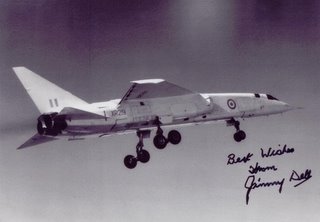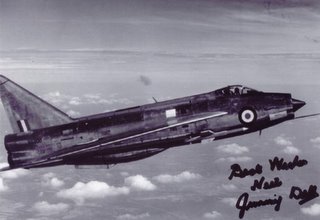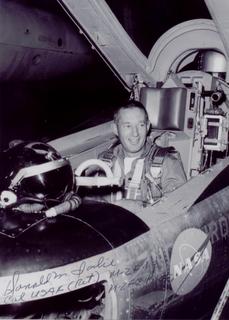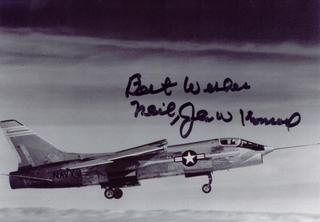Wg Cdr James Leonard Dell OBE 1924 -2008




 Wing Commander James Leonard Dell OBE One of a unique breed of aviators who have achieved great career success as a fast jet test pilot within both military and commercial environments. Probably best known for his work on the English Electric Lightning, Jimmy Dell has used his skill, courage and intimate knowledge of aerodynamics to reach the very top of a highly demanding profession.
Wing Commander James Leonard Dell OBE One of a unique breed of aviators who have achieved great career success as a fast jet test pilot within both military and commercial environments. Probably best known for his work on the English Electric Lightning, Jimmy Dell has used his skill, courage and intimate knowledge of aerodynamics to reach the very top of a highly demanding profession.
Born in
After the war Jimmy performed various training and test flying roles on aircraft such as Spitfires, Meteors, Venoms and Hunters. He also led test flight teams to the USA and France to work on aircraft such as the F-100, F-104, F-105, F-106, Mystere 4 and Mirage 3.
In 1957 he was detached as Fighter Command liaison officer to English Electric where he worked on the air fighting development of the Lightning, an important role in bringing this awesomely fast jet into effective squadron service. In 1959 he retired from the RAF with the rank of wing commander, and was appointed English Electric's deputy chief test pilot, working under the wartime fighter ace and chief test pilot Roland Beamont, who was to make the first flights in the TSR2 in 1964. Jimmy also worked on the TSR2 programme and flew 12 of the aircraft’s 24 test flights, he made the last flight of the TSR2 on
He became Chief test pilot when Bee Beamont retired and he worked on the French / UK Jaguar programme, and finally became Director, Flight Operations with responsibility for all Tornado test flight activities across the three participating countries. Jimmy Dell retired in 1989.

















